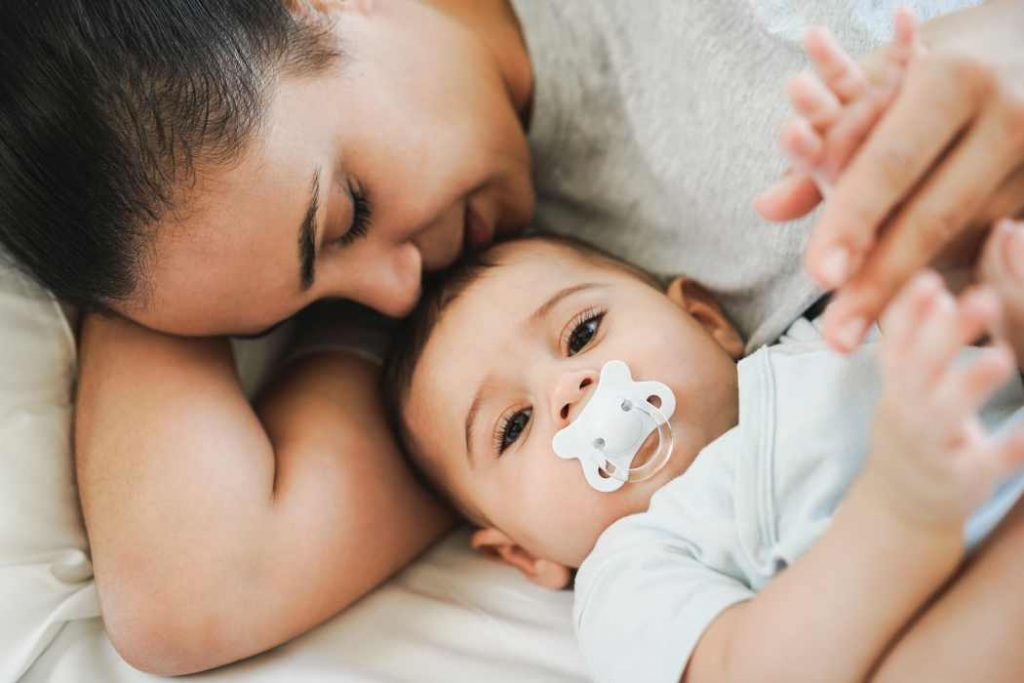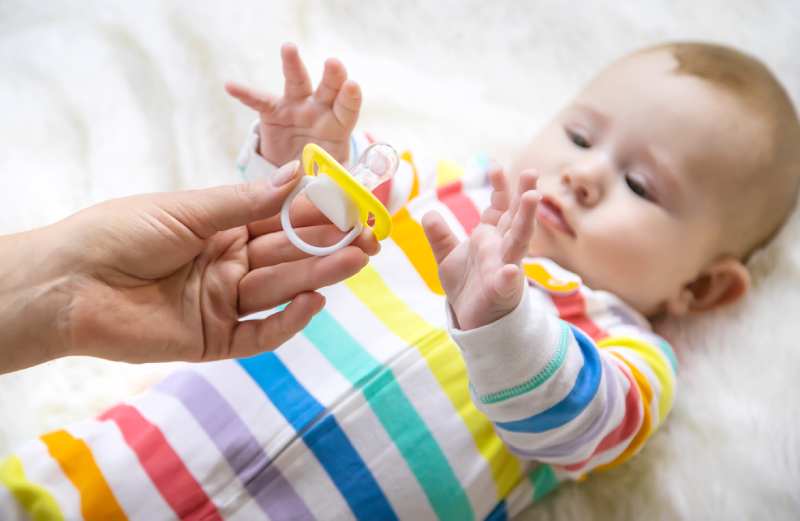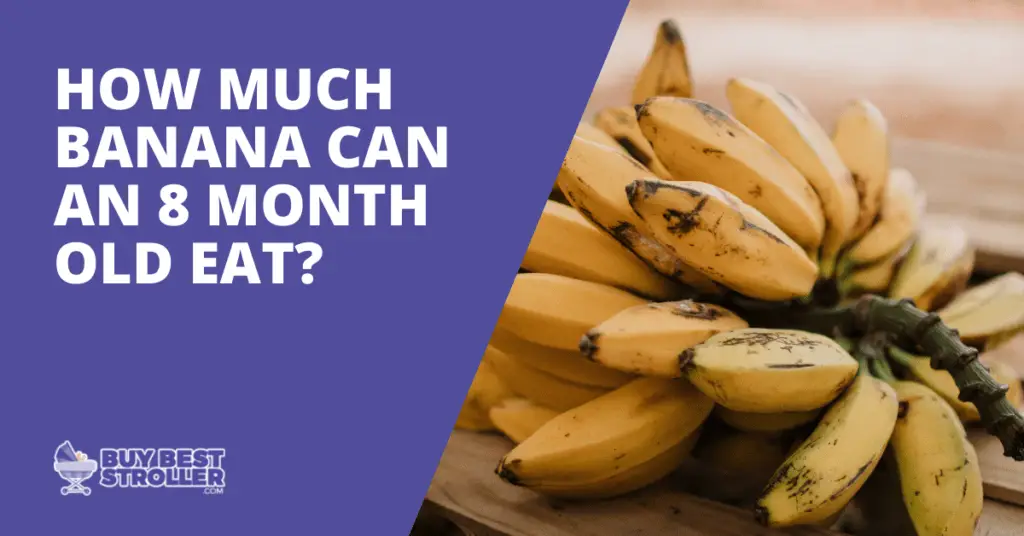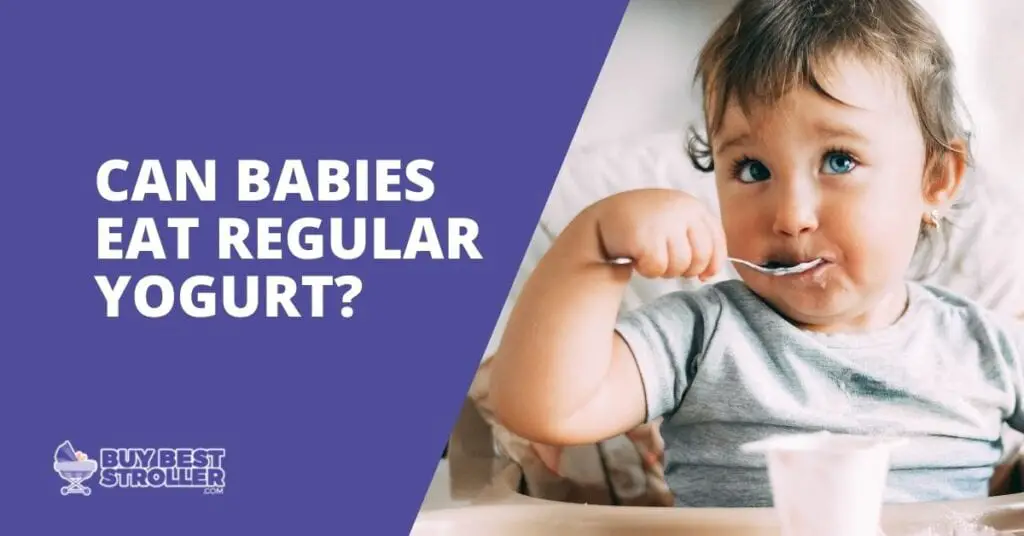Usually, parents may advise you to have at least two or three pacifiers on hand for the baby. Some mothers, in contrast, believe you’ll need a lot more than this.
It’s a subjective decision about how many pacifiers you’ll need. Since the number of pacifiers you need directly relates to the number of pacifiers, your baby throws. In most circumstances, your child will only need one pacifier. It will be more feasible to have a backup that can act as a rescue if something goes missing or is misplaced.

What purpose does a pacifier serve?
Binky, pacifier, bo-bo, or soother: There are countless (many) labels for pacifiers. Whatever name you give them. The nipple replacement known as a “pacifier” comforts cranky newborns by rewarding their innate biological desire to suck. Pacifiers can be pretty useful in a variety of situations:
- In times of weeping, pacifiers assist newborns in calming them.
- When a baby wants the pleasure that sucking brings but is either not hungry or is already full, parents and babies can use pacifiers to help.
- Pacifiers can benefit parents throughout the first few months of their kid’s development.
- A pacifier may facilitate your baby in falling asleep.
Why do you need multiple pacifiers?
There are a lot of subjective factors that go into the answer. There could be potential factors that could influence your decision to use more than one pacifier. They could include:
- Once babies start moving around, they lose their pacifiers considerably more frequently.
- After becoming a mother, you tend to forget things fast and find it challenging to remember one item at a time.
- The one you have become old and ruined.
- Your infant enjoys new experiences, pacifier keeps them captivated for a few moments.
- The first one is chewed and bit by your kid.
- You leave the first one at home.
It primarily depends on your baby’s growth, interests, and surroundings. However, you should always have two or three backup pacifiers if something goes wrong, like forgetting to bring one you usually have.

4 Potential benefits of using a pacifier
- Pacifier Help calm your restless baby
A pacifier might provide a distraction when a baby becomes restless during injections or blood testing.
- They serve as a pain reliever
Flight anxiety may be reduced with a pacifier. To relieve ear pain brought on by variations in air pressure. Sucking on a pacifier could be beneficial.
- Reduce Chances of SID
The probability of sudden infant death syndrome (SIDS) may be decreased with the use of a pacifier (SIDS). Sucking on a pacifier during naps and bedtime may lessen the risk of SIDS.
- They are disposable
Because pacifiers are single-use items, you can discard them.
Four Tips for Choosing the Best Pacifier for Your Baby

1. Always choose quality over quantity
While a low price may be appealing, the reliability of the pacifier you choose can have a substantial impact on your baby’s safety and wellness. Choose a pacifier that won’t readily break and is composed of a BPA-free substance.
2. Easy To Wash Material
Latex is the greatest option for a secure, non-toxic, and environmentally friendly pacifier. It’s crucial to clean pacifiers regularly. Using the dishwasher can be convenient for working parents. Additionally, pick one that can be sterilized by being cleaned and boiled.
Pacifier materials include:
- Silicone Pacifiers
- Latex Pacifiers
- Natural Rubber Pacifiers
3. Look up the dates of expiration
Some companies have included an expiration date on the package of their pacifiers. It is critical to keep an eye on this date since it will significantly impact the quality of the pacifier you will get.
4. Double-check the pacifier for any dark spots or scratches
The pacifier’s darkening could signal that the container has already been mistreated or that the entire piece has run out of date. It’s also better to verify the pacifier’s materials. Babies should never be given pacifiers with any details that might fall off since they pose a choking hazard.
What are the Risks related to using a pacifier?

1. One can become fixated on Pacifiers
In some cases, when the pacifier is taken out of your baby’s mouth in the middle of the night if they use pacifiers to help them sleep, you may experience crying outbursts. They become so fixated on that gratification that it becomes hard for them to leave it.
2. Risk of Ear infection
The usage of pacifiers may raise the risk of middle ear infection. However, the most common middle ear infections occur between birth and 6 months old.
3. Long-term pacifier use may cause oral issues
Regular pacifier usage throughout the first few years usually doesn’t result in long-term dental issues. But frequent pacifier use could lead to crooked teeth in kids.
4. Pacifiers may conceal breastfeeding signals in babies
If you’re breastfeeding, you should hold off on introducing your child to a pacifier unless your baby reached three to four weeks old and you’ve created a feeding pattern.
It may become difficult for your baby to convey its hunger to you through feeding signals. This can eventually impair your milk production. This will raise the likelihood that you’ll need to take formula supplements.
FAQs
Do I Need Many Pacifiers for Infants Between 0 and 3 Months?
You should have two to three pacifiers on hand as a rough estimate.
- One to be used for your newborn.
- Second if first damaged or lost.
- Third for a safer option.
How Many Pacifiers Will I Need over a Year?
For your child’s initial years, you must have at least 2 different pacifiers in each size. Although sizes will vary between brands, you should plan to purchase four pacifiers at the very least for a year.
How Many Pacifier Clips Will I Need?
As a new mother, pacifier clips can be your favorite baby innovations of all time, even though they are not required for pacifier use. They are pretty useful to lessen the likelihood of your baby losing its pacifier. Always keep two pacifier clips on hand. There may be moments when a second pacifier clip is needed.
Should I get a more oversized pacifier?
Of course, as your child grows, you’ll probably need to buy bigger pacifiers, most likely when your baby has reached the ages of 6 and 12 or 18 months.
But you don’t need extra-large pacifiers before your baby is born. As previously said, each newborn is unique since your baby’s preference cannot be predicted.
How long can a baby use a pacifier per day?
Don’t leave it for too long, pacifiers might lead to misaligned teeth. A pacifier may only be used for six hours each day, although. It’s crucial to remember that every child’s mouth and teeth develop uniquely.
When the infant falls sleeping, should I take the pacifier out?
Once they are asleep, you do not have to remove it. However, there is no need for you to reintroduce the pacifier if it happens to fall out.
Conclusion
The number of pacifiers you require depends on your baby and your circumstances. Most children quit sucking on pacifiers on their own between 2 and 4, but other children require assistance. Once your baby refuses to put on the pacifier, give him or her encouragement. If the child is experiencing trouble showing up for the pacifier, consult with your children’s dentist or pediatrician.



